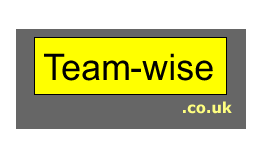UI - UC
Unconscious Incompetence to Unconscious Competence.
The Theory - Levels
This theory suggests that the level that one has in a skill falls roughly into 4 categories.
Level 1 - Unconscious Competence
This is the level that we aspire to. This is when you can use a skill without having to think about it. If we use driving as an example, this level of skill is the one that many people have after driving for many years, not only can they drive without having to think about which gear they are in or what to do next on the road, they can probably tune the radio in, drink a milk shake and use the phone at the same time.
Level 2 - Conscious Competence
This is when you are able to use a skill but you have to think about it while you are doing it. Again using driving as an example, this level equates to someone who has just passed their driving test, they can do all the right things but they have to concentrate.
Level 3 - Conscious Incompetence
This level is where you have an awareness that you can't do something. In terms of driving this comes pretty much the first time you sit in a car with the intention of driving it and are faced with a load of levels and buttons and other controls and once you actually start the engine it gets worse.
Level 4 - Unconscious Incompetence
This is a level where you are aware of the skill but do not realise that you can't do it. This is the 14 year old sitting in front of the telly watching the Dukes of Hazard dreaming of making that orange box on wheels jump over houses with no awareness that a gear lever even exists.
The Theory - Moving between levels
The model is interesting in itself however for me the best part of it is the consideration of how you move from one level to the next.
To get from Level 2 to Level 1 it is just a case of repetition, doing it again and again until you don't have to think about it.
To get from level 3 to level 2 then this is a learning process, ie finding out what you have to do either by being taught or by trial and erro.
Level 4 to level 3 comes from trying it and being aware of the results that you are achieving either from self analysis or from feedback.
Application
The application of this theory is perhaps strongest in development and training whether of yourself or of others. When I am running a training session that I make sure I know which levels I am seeking to move someone between and especially not spending time at the wrong level. I do the same thing in self development.
I also take time to ensure that the person developing a skill is aware of these levels.
The result of this is that the training sessions have less wasted time and effort and are more interesting for the learners. It also means that the actions that could be more boring are actually seen as very valuable typically the stage where someone will say, OK I can do that now, let's do something else, when it is important that they repeat the action to bed it in.

